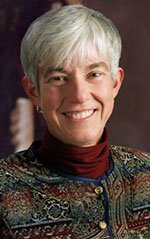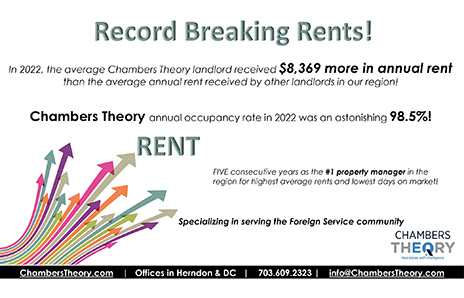Learning the Ropes Through Rotations
Entry-level diplomats can gain valuable experience with rotational job opportunities.
BY BEATRICE CAMP
The American Diplomacy Project (Phase II) released Blueprints for a More Modern U.S. Diplomatic Service in September 2022 designed to produce significant changes in the lives and careers of our diplomats and in the ways the United States executes its diplomacy. The project combines specific recommendations to support the creation of a more modern U.S. diplomacy with the legislative and regulatory language required to turn these ideas into realities.
The second of the four “blueprints” focuses on State Department professional education and training, with Ambassadors Joyce Barr and Daniel Smith as team leaders and principal authors. While there are many parts to this section, I was caught by one suggestion: “Overseas, there should also be more rotational job opportunities to enable all entry-level Foreign Service Generalists to spend extended periods of time in different sections of a mission.”
A Practical Proposal
The introduction, which argues for a training complement, aka training float, reads:
State Department leadership of American diplomacy in an increasingly complex and dangerous world depends on several factors, crucially including having personnel with the right skills, knowledge, and experience in the right places at the right time to advance American national security interests. This Blueprint makes specific proposals to enable the Department to make strategic and operationally relevant long-term investments in its people. This is essential if the Department expects to secure its role as the foreign policy lead for the U.S. Government.
• While there may be a need to augment entry-level training, including with additional leadership training that FSI has identified, we believe the most constructive use of a training complement in this area would be to also provide greater opportunities for rotational assignments early in a career, whether Foreign Service or Civil Service.
• Domestically, this should include short-term assignments for Foreign Service personnel in various Department bureaus, especially functional bureaus, prior to their first overseas assignments. In addition, new Civil Service personnel need opportunities to spend time in other parts of the Department outside of their hiring bureau.
• Overseas, there should also be more rotational job opportunities to enable all entry-level Foreign Service Generalists to spend extended periods of time in different sections of a mission. Determining how this would work at each post should be part of the “right people in the right places” program covered in Blueprint #3. The Presidential Management Fellows program is an excellent model that builds a training continuum and a rotational opportunity or development assignment into a two-year program.
The rotational proposal echoes a practice that those of us who were part of the now-defunct U.S. Information Agency benefited from.
This rotational proposal makes eminent sense, and echoes a practice that those of us who were part of the now-defunct U.S. Information Agency benefited from. After joining USIA in 1983 and being assigned to Beijing as a junior officer trainee (JOT), I was fortunate to have rotations that took me to the commercial, economic, and consular sections. I also profited from a stint in Shanghai, where I returned 25 years later as consul general.
Proven Benefits
In their oral histories recorded and catalogued by the Association for Diplomatic Studies and Training, retirees Don Bishop and Brian Carlson testify to the benefits of their rotations.
As Don Bishop states: “USIA had its own sequencing for the training of new Foreign Service Officers, different than State’s. New USIA FSOs were sent for one year to a training post, usually at one of our larger embassies. This was so the new officer could be exposed to all the different parts of Public Diplomacy, both on the ‘information’ and the ‘cultural affairs’ side. The year at the first post also included some months of rotation through State sections and the Foreign Commercial Service.
“Afterward, a new officer went on to a second post in a junior officer position, usually as an assistant information officer or assistant cultural affairs officer. Generally, I found that new State officers were jealous of the USIA system.”
Brian Carlson relates his experience thus: “I departed to an assignment as a so-called ‘junior officer trainee’ in the American Embassy in Caracas. In those days a junior officer training assignment was for 12 months. It was ‘over complement’—meaning that you did not occupy an existing position on the organization chart. It was intended to be a rotation among various jobs in the mission—both in USIA work (the cultural work, exchanges, the press side, and the binational center), as well as in different embassy sections (political, economic, administrative). In each section, a younger officer was assigned to be my ‘supervisor,’ and I was given some kind of assignment or project to work on.
“I always thought the JOT program of USIA was a good introduction, and I often thought more State Department junior officer positions suffered sometimes because they didn’t have the opportunity that USIA’s JOT had to move around and get different experience, to get a different experience, get a real insight into all aspects of the service.”
Other alums agree. In her oral history, Judith Bryan remarks: “My rotation in Tokyo included many embassy sections, which truly gave me insight into how an embassy works. Also subsections if a large USIS operation. Invaluable part of my training.”
Although participation was sometimes stymied by factors at post, USIA retirees universally cite the rotational program as a vital element in their early experiences as diplomats.
Martin Quinn has this to say on the subject: “The former JO rotation policy was a very good one. I served 1984-1985 for two months each in Management, Consular, POL, Commercial and Econ sections in Riyadh, a well-run embassy, before returning to USIS. The perspective was absolutely invaluable.”
And Mary Ellen Gilroy echoes the sentiment: “My JOT rotation in Port-au-Prince was excellent preparation for future assignments as PAO and DCM. I spent a month in all the embassy sections, including USAID and MLO.”
Despite Occasional Roadblocks
Of course the rotational experience, which sometimes included a Washington, D.C., component, faced occasional roadblocks. Susan Clyde, who was head of Foreign Service Personnel for USIA before the 1999 merger, observed that the program depended on the goodwill of the people involved at the post, including a PAO willing to let a junior officer spend time in another section instead of doing public diplomacy work.
“At the same time, many State heads of section saw no reason to waste their time, as they saw it, training an officer who was only going to be in their section for a couple of months, and likely would never do that kind of work again,” she explains in her oral history. “It helped a lot if the DCM [deputy chief of mission] was on board and made sure it happened.”
When USIA was consolidated into the State Department in 1999, the department promised that it would carefully study USIA’s personnel practices and adopt its “best practices.” In the end, however, State did not opt to take on any of the USIA best practices identified by the transition team.
While the American Diplomacy Project blueprint makes clear that any expansion of training depends on a “training complement,” the USIA rotational experience is worth consideration. Although participation was sometimes stymied by factors at post, USIA retirees universally cite the rotational program as a vital element in their early experiences as diplomats.
As Gilroy notes: “In spite of technology, diplomacy is still a craft. We spend years learning how to cultivate contacts, report, and do outreach. We invest in years of training (language, tradecraft). It would be very helpful to the Foreign Service if we allowed our entry-level officers the chance to spend a year or two learning with practical hands-on work how our embassies function.”
When sharing or linking to FSJ articles online, which we welcome and encourage, please be sure to cite the magazine (The Foreign Service Journal) and the month and year of publication. Please check the permissions page for further details.
Read More...
- “Training Tomorrow’s Diplomats” by Teresita C. Shaeffer, The Foreign Service Journal, October 1997
- “Building a Foreign Service for 2025 and Beyond” by Arnold Chacón and Alex Karagiannis, The Foreign Service Journal, May 2015
- “Revitalizing State: Closing the Education Gap” by David C. Miller, Jr., Thomas R. Pickering, and Rand Beers, The Foreign Service Journal, May 2021





